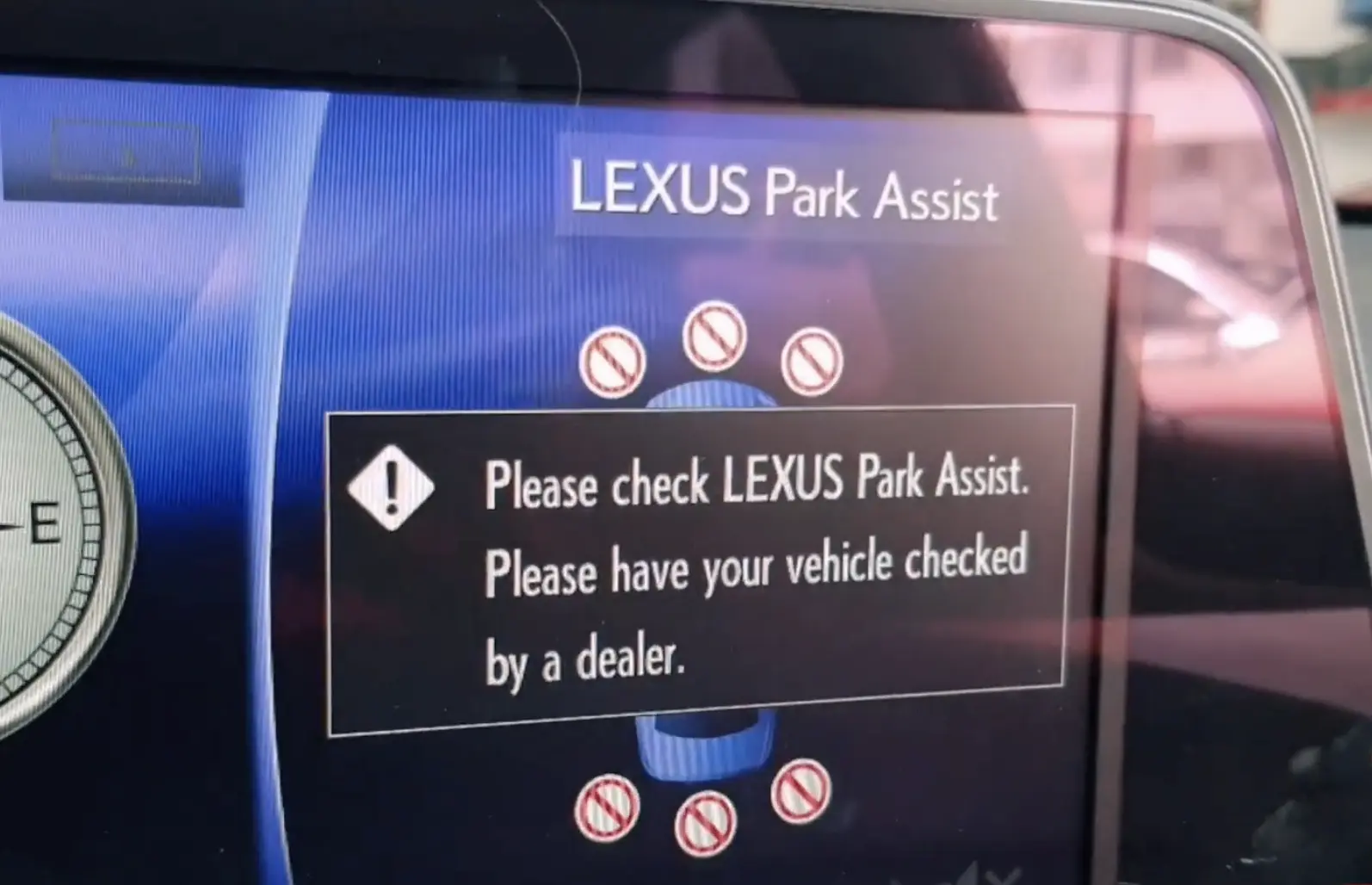With park assistance, drivers can better navigate tight parking spaces. Each corner of a Lexus car and the back bumper have six parking sensors.
As the geometry of the barrier changes, so will the sensor’s detecting range. Each of the Lexus parking sensors has an estimated range for detecting obstacles:
⦁ Corner sensors in the front: 50 cm (1.6 ft.)
⦁ Sensors in each back corner: 60 cm (2.0 ft.)
⦁ Distance from the rear sensors, in meters: 150 (4.9 ft.)
Reasons for Unavailable Parking Assistant
If there is currently no parking assistance available, a Sensor for Parking Aid will appear on the dashboard. The sensor may freeze in cold weather or the environment can cover the sensor with dirt or ice. This will lead to a malfunctioning display. It cannot detect an obstruction. The system should go back to normal once the sensor thaws.
If the M.I.D. shows “Parking Assist Malfunction Visit Your Dealer,” the malfunctioning device might be because of a faulty sensor.
The effectiveness of Lexus’s parking sensor’s ability to identify impediments might be compromised by certain situations and surroundings. The following reasons would cause the sensors to fail:
⦁ When the vehicle’s speed exceeds roughly 10 kilometers per hour (6 mph).
⦁ It’s possible for the system to fail if dirt, snow, or ice covers the sensors. You can fix this by cleaning the sensor.
⦁ Stickers can hide the sensor.
⦁ The sensors froze, so they will not detect obstructions. The screen may show a distorted image. This issue will improve if the sensors warm up naturally or manually warmed.
⦁ There is a significant slant to one side of the Vehicle.
⦁ Extremely rough roads, inclines, gravel, and grass may prevent sensors from working or cause them to identify obstructions incorrectly.
⦁ Ultrasonic waves created by horns, motorbike engines, massive vehicle air brakes, and other loud sounds might cause sensor malfunction.
⦁ If another car is nearby employing parking assist sensors, it will cause complications.
⦁ Heavy rain might prevent sensors from functioning correctly.
⦁ Eyelets for towing have been welded.
⦁ The bumper took a significant hit.
⦁ A high or curving curb is in the car’s way.
⦁ Extreme temperature or brightness may compromise object detection.
⦁ If an obstruction is too close to the sensor, detection and alerts may not occur.
⦁ There is a blind spot under the bumpers.
⦁ A mechanic fitted the vehicle with a Non-Original Lexus Suspension.
⦁ Detection issues might arise depending on the clothes a pedestrian wears.
Problems in Identifying Obstacles Based on Their Shape
Depending on the sensor’s design, it can detect certain items, because of their form. Some examples are:
⦁ Wires, fences, ropes, etc, are all examples of this item.
⦁ cotton, snow, and other similar materials can absorb sound waves.
⦁ Objects with right angles.
⦁ Anything lying underneath the sensing apparatus.
⦁ Anything that is both high and projects in the car’s direction.
Malfunctions with the Parking Sensors
If none of the above is true, a malfunctioning sensor may render the Lexus parking sensors inoperable. This will cause the Lexus Park to assist in either ceasing the beeping altogether, switching off, or staying on. A mechanic must check the sensor as soon as possible if:
⦁ The parking assist-sensor operating display will flash, and a beep will ring, even if there aren’t any obstacles.
⦁ Objects collide with the sensors’ surroundings.
⦁ The bumper took a hard hit.
⦁ To avoid annoying beeps, the parking-assistance screen stays on at all times (unless the buzzer mute may switch on).
⦁ Powerful blasts of water or steam came into contact with the sensor regions when washing the car.
⦁ How far can an obstacle be to set off a buzzer? When the sensors are active, a buzzer will ring.
⦁ As the car gets closer to an obstruction, the buzzer will ring more rapidly.
The buzzer will ring continually when the Vehicle is within around 30 centimeters (1.0 feet) of the barrier. The closest obstacles will trigger the alarm when the sensor identifies many objects at once. Once one or both obstacles reach inside that range, the beep will play a long tone again, followed by short ones.
When the buzzer starts, it will stop if the distance between the car and the item it has identified does not decrease. (However, if there are less than 1.0 ft (30 cm) of clearance between the car and the object, this feature will not activate.
Safety measures for parking aids to prevent failures
Make sure you consider the safety measures while using the intelligent parking aid. If you don’t, the car is not safe to drive. Driving it could lead to an incident. Do not use the sensor at speeds above 10 kilometers per hour (6 mph).
The sensors have restricted detection ranges and slow response times. Slow down, use the brake to maintain control of your speed, and always double-check your surroundings, particularly around the car’s sides, before driving ahead or backward.
To avoid false readings, avoid putting additional equipment in the sensors’ range of vision.
Conclusion
If your Lexus parking sensors aren’t picking up anything, the first thing you should do is activate the Park Assist feature. Sometimes the most straightforward explanations are the most effective, so don’t feel bad if you don’t immediately get it. In this scenario, the button is so imperceptibly small that it often gets pressed without your knowledge. Check the door to find the long black button labeled “P” push; it is near the Auto button for the windows. After ensuring it is switched on, checking the fuse is the next step. The GAUGE fuse is an A7.5A component in the driver’s side fuse box.

